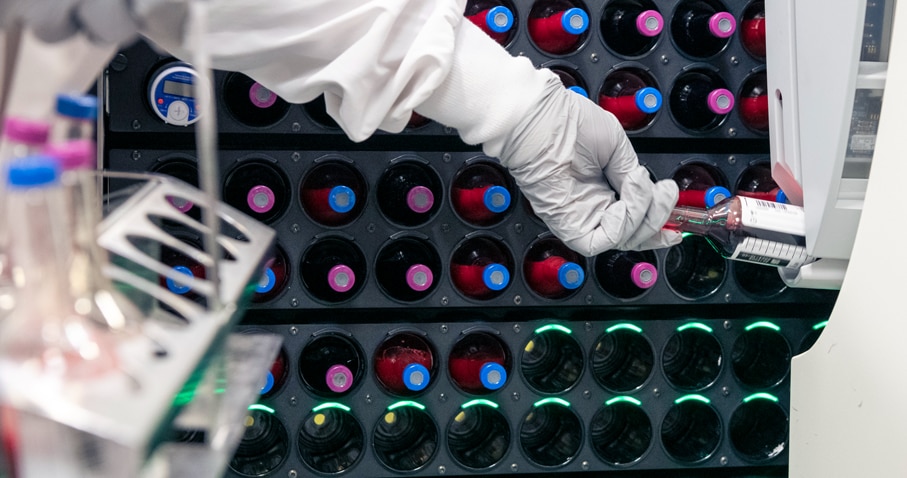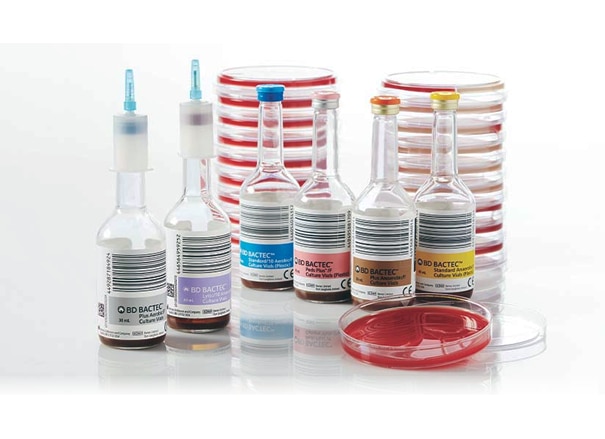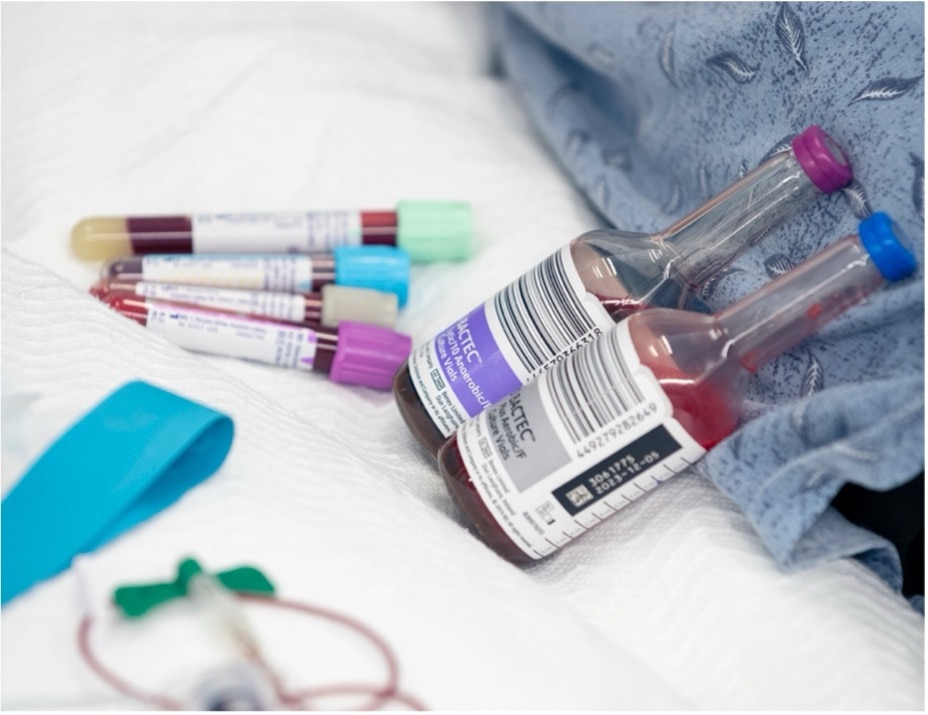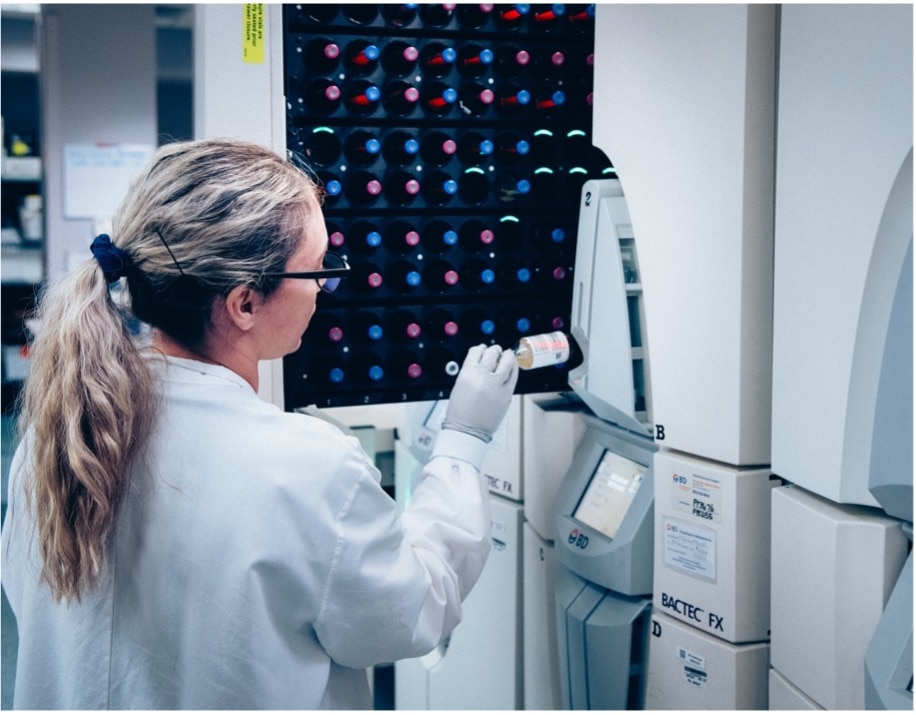BD BACTEC™ Blood Culture System
Combine the performance of the BD BACTEC™ Perfect Media Pair with the BD BACTEC™ FX instrumentation to optimize time to microorganism detection.1,2


- Overview
- Products & Accessories
- EIFU & Resources
The BD BACTEC™ blood culture family of products includes a complete line of blood culture media formulations and scalable, modular instrumentation that can be deployed near the point of collection to support faster time to detection and reduced time to appropriate treatment.1-5

BD BACTEC™ Blood Culture Media
BD offers a complete line of blood culture media for the detection of aerobes, anaerobes, facultative anaerobes, yeast, fungi and mycobacteria, all specifically developed to help improve time to detection and organism recovery, which allow for shorter time to appropriate therapy.1,3-6
In addition, BD BACTEC™ blood culture vials are fully compatible with a standard blood collection wingset with preattached holder and do not require an additional transfer device, thus potentially reducing the risk of contamination and accidental needlestick injuries.

BD BACTEC™ Perfect Media Pair
Detection and identification of anaerobic bacteria in blood cultures is a well-recognized challenge in clinical microbiology.4
The combination of BD BACTEC™ Plus Aerobic/F Culture Vials and BD BACTEC™ Lytic/10 Anaerobic/F Culture Vials ensures fast detection and optimal organism recovery of both aerobic and anaerobic organisms, with proven performance in the detection of anaerobic organisms which make up 1-17% of all positive blood cultures but are associated with 15-30% of the mortality rate.1,4-6

BD BACTEC™ FX Blood Culture System
We recognize that standardization is important to you. The BD BACTEC™ FX blood culture system offers the same continuum of care across the entire healthcare system as the benefits of our instrumentation are consistent from small to large size labs.
The scalable and modular BD BACTEC™ FX Instrument allows for simple, and rapid workflow across multiple sites of a healthcare system. In addition, the possibility of near-patient incubation with the BD BACTEC™ FX40 Instrument helps reduce time to a reportable blood culture result which may enable earlier decision-making regarding antimicrobial treatment.2

Powered by BD Synapsys™ Informatics Solution
Multiple means to obtain blood culture-related data exist, but it can be difficult to access or synthesize this information to uncover insights. The BD BACTEC™ blood culture system, powered by BD Synapsys™ Informatics Solution, integrates blood culture result reporting with a scalable, cybersecure solution to translate your blood culture-related data into meaningful and actionable insights.7
By working with BD, you can automate the process of translating data from multiple instruments and/or locations into meaningful and actionable insights that can support day-to-day management both inside and outside the lab.
Choose the BD BACTEC™ system as part of the integrated, end-to-end BD Bloodstream Infection Solution that seamlessly connects specimen collection, blood culture and antimicrobial susceptibility testing.
Related Products
An efficient bloodstream infection diagnostic pathway begins with high-quality blood culture samples8,9
Meaningful and actionable insights accessible anytime, anywhere with BD Informatics

Bloodstream Infection
- Li G et al. Front Cell Infect Microbiol. 2019;9:285.
- Bruins MJ et al. Eur J Clin Microbiol Infect Dis. 2017;36(4):619–23.
- Zadroga R et al. Clin Infect Dis. 2013;56(6):790–7.
- Almuhayawi M et al. PLoS ONE. 2015;10(11):e0142398.
- Rocchetti A et al. J Microbiol Methods. 2016;130:129–32.
- Rohner P et al. J Clin Microbiol. 1997;35(10):2634–8.
- BD Synapsys™ Microbiology Informatics Solution User's Manual (L011216).
- CLSI. Principles and Procedures for Blood Cultures. 2nd Ed. CLSI Guideline M47. Clinical and Laboratory Standards Institute; 2022.
- CDC. Preventing Adult Blood Culture Contamination: A Quality Tool for Clinical Laboratory Professionals. https://www.cdc.gov/labquality/docs/BCC-Prevention_A-Quality-Tool_CDC.pdf. Accessed October 2023.
- Hotaling M. Jt Comm J Qual Patient Saf. 2009;35(2):100–61.
- Mouser A et al. J Appl Lab Med. 2017;2(2):201–10.
- Merrill VD et al. J Appl Lab Med. 2022;7(2):532–40.
- Padoan A et al. Clin Chim Acta. 2020;500:213–9.
- BD™ Bruker MALDI Biotyper CA System User Manual (8603291).
- Saffert RT et al. J Clin Microbiol. 2011;49(3):887–92.
- Knabl L et al. Lett Appl Microbiol. 2021;73(1):2–8.
- Watanabe N et al. J Infect Chemother. 2022;28(4):563–8.
- BD Phoenix™ M50 Automated Microbiology System User's Manual (500008930).
- Carey RB et al. Failure of Automated Systems to Detect Vancomycin-Resistant Staphylococcus aureus. Abstract presented at the Interscience Conference on Antimicrobial Agents and Chemotherapy (ICAAC), Washington, DC, 2004.
- Tenover FC et al. Emerg Infect Dis. 2006;12(8):1209–13.
- Kulah C et al. BMC Infect Dis. 2009;9:30.
- Mittman SA et al. J Clin Microbiol. 2009;47(11):3557–61.
- Woodford N et al. J Clin Microbiol. 2010;48(8):2999–3002.
- BD EpiCenter™ Microbiology Data Management System User's Training Manual (SHQ-TM-020).
Our collection of literature on industries and on our offerings gives you information you can use to continue striving for excellence.






